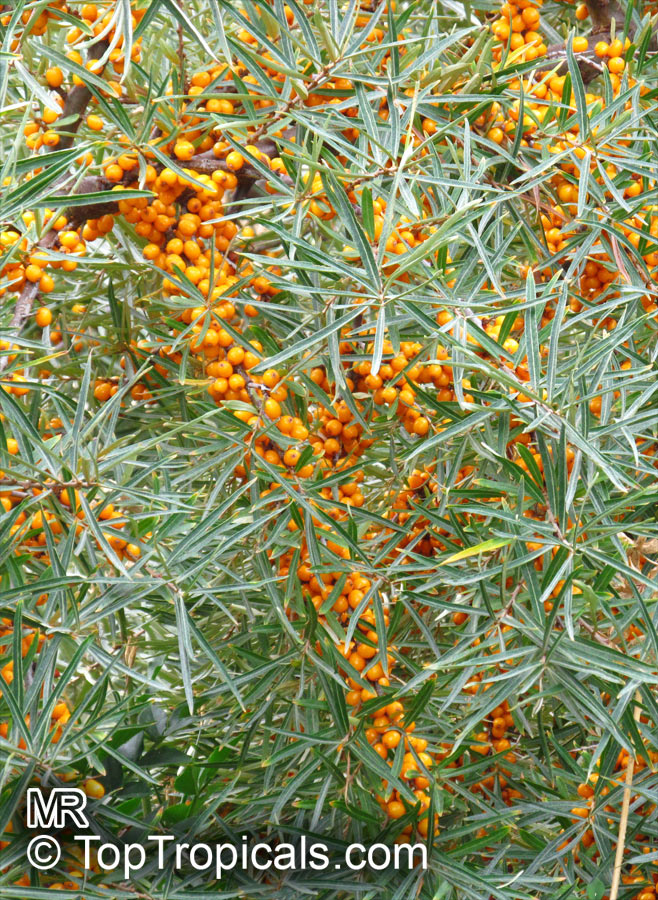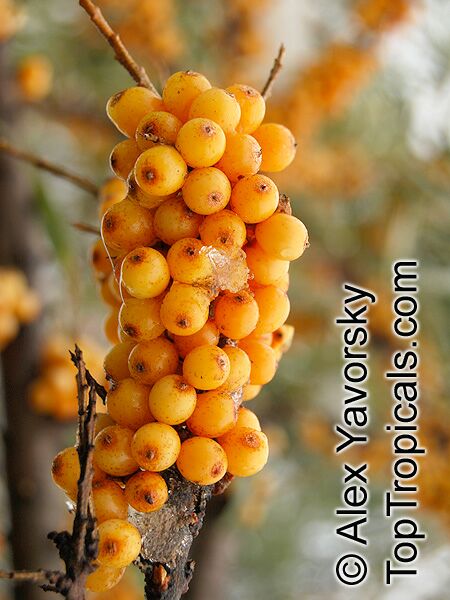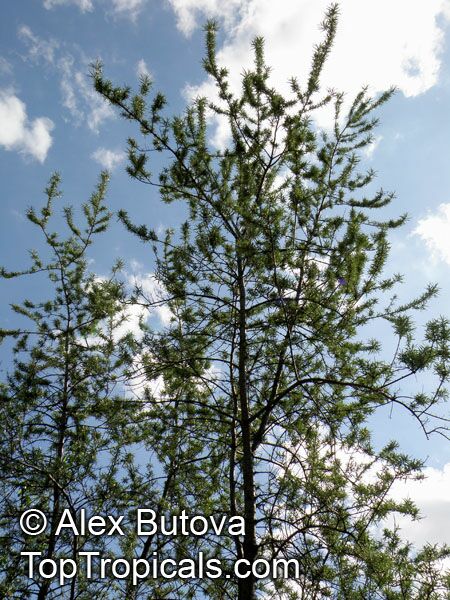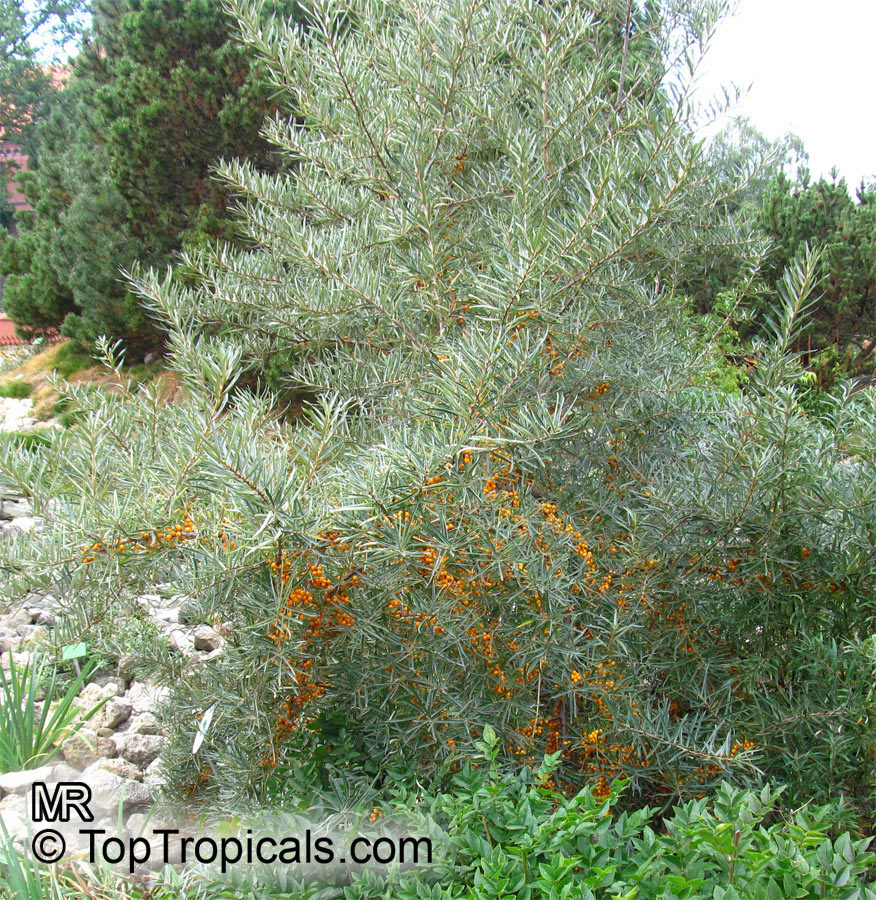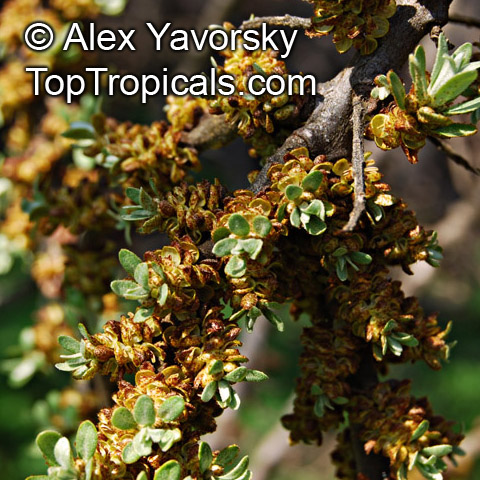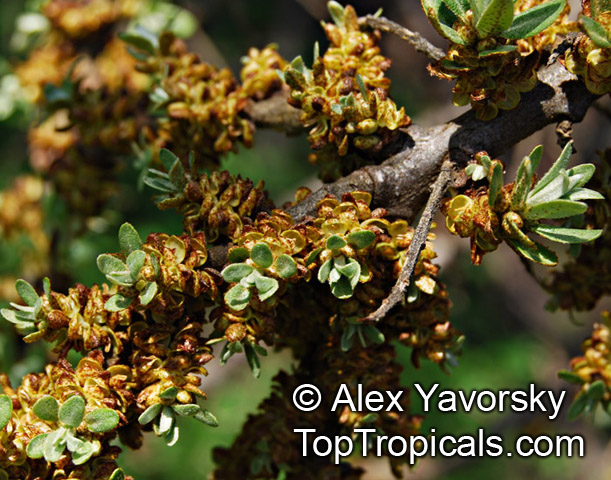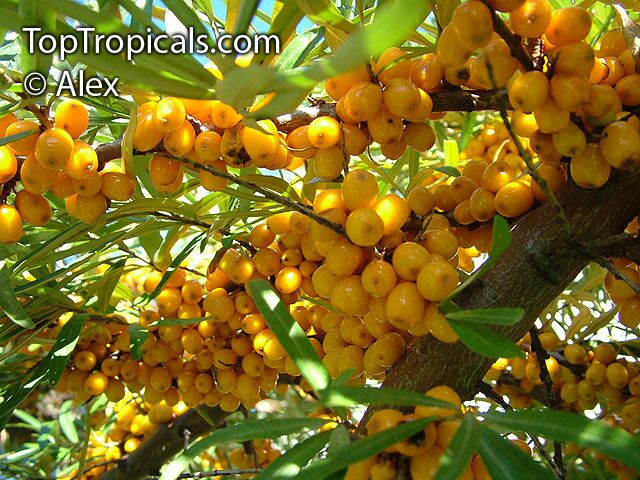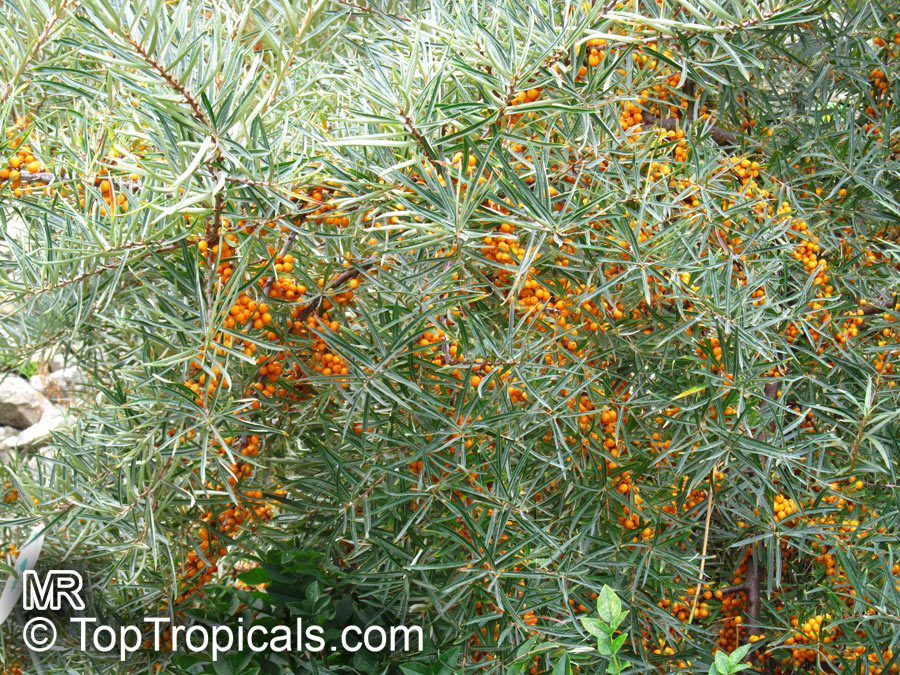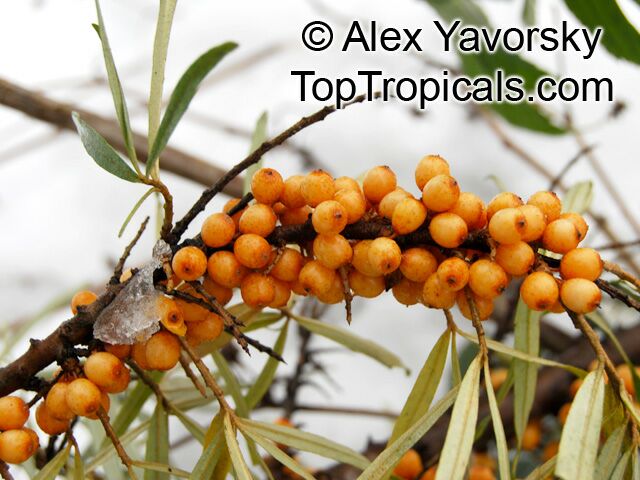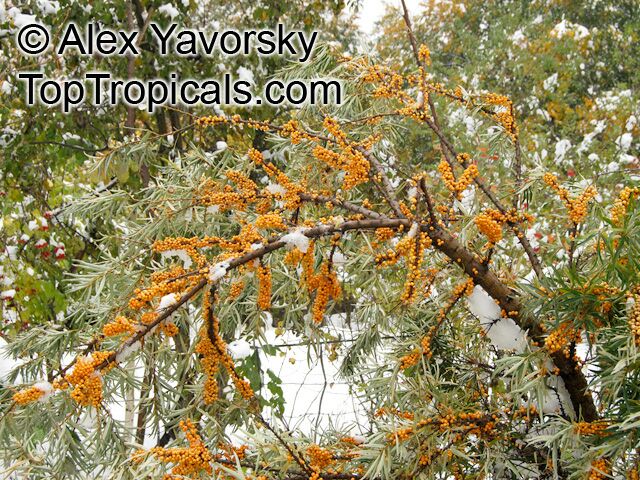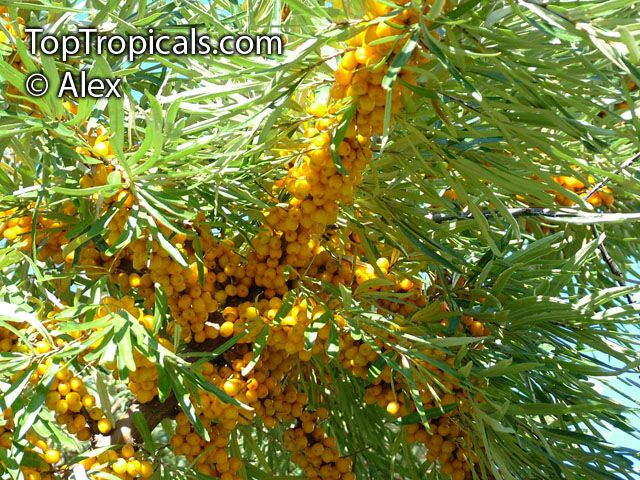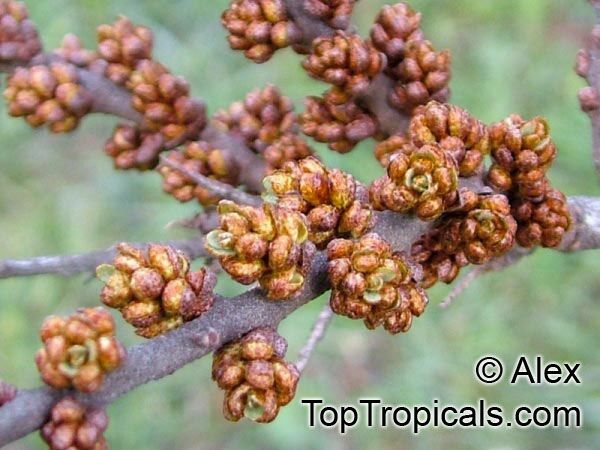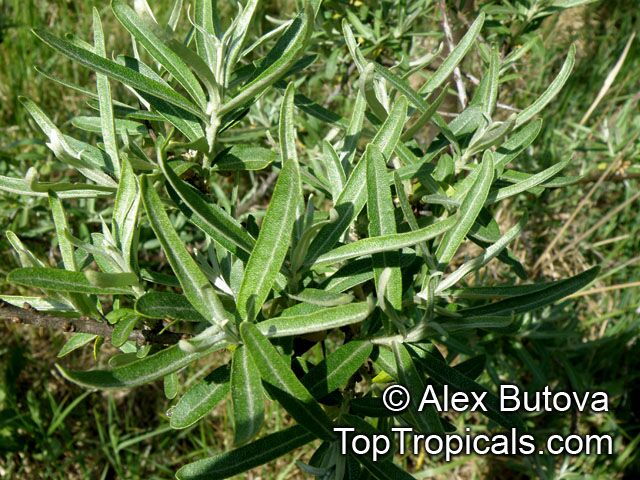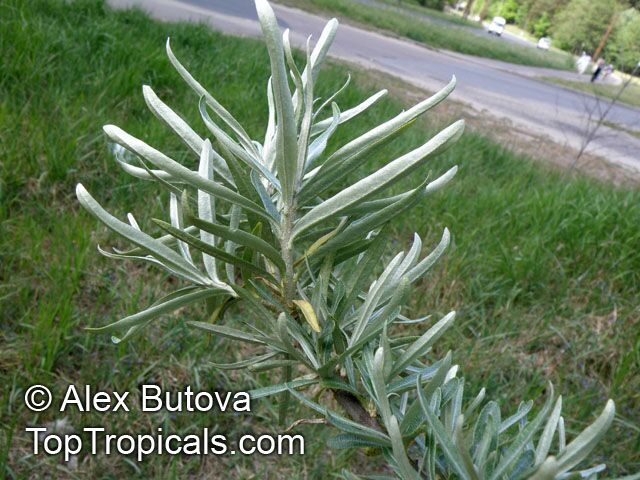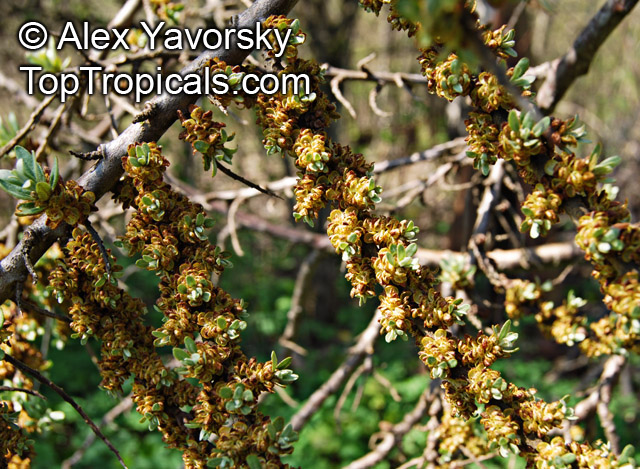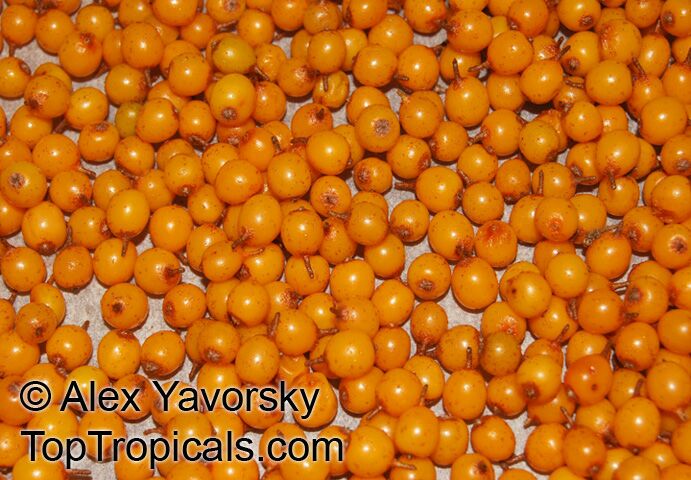Hippophae rhamnoides (Sea Buckthorn)
Top Tropicals Plant Encyclopedia
Botanical name: Hippophae rhamnoides
Common name: Sea Buckthorn
Family: Elaeagnaceae
Origin: Temperate zones of Asia and Europe









Sea Buckthorn (Hippophae rhamnoides) is a large shrub or small tree that is native to Europe and Asia. It is known for its abundant yellow-orange berries, which grow in clusters and ripen in the fall. These berries are edible, with a tangy flavor and high vitamin content. They can be eaten fresh or used to make jams and sauces.
Sea Buckthorn will grow in full sun and with moderate water. It is hardy to USDA Zone 3-7. The plant can reach 5-10 feet tall as a shrub or 10-20 feet tall as a small tree, depending on age and climate.
Sea Buckthorn has a long history of medicinal and nutritional use, dating back many centuries in Europe and Asia. It was fed to horses in ancient Greece to improve their health and shine their coats. The plant is known for producing a high-quality medical oil from its fruit, which is used in the treatment of cardiac disorders and is the best single source known to man for Vitamin E, Vitamin C, Beta-carotene, unsaturated fatty acids, essential amino acids, and flavonoids.
Sea Buckthorn is also being increasingly used in making fruit juices, especially when mixed with other fruits, because of its reputed health benefits. The freshly pressed juice is used in the treatment of colds and exhaustion. The plant has dense and stiff branches, and the leaves are a distinct pale silvery-green color. Sea Buckthorn is dioecious, with male and female flowers on separate plants. The flowers bloom in April and are cold hardy to hard freeze.
